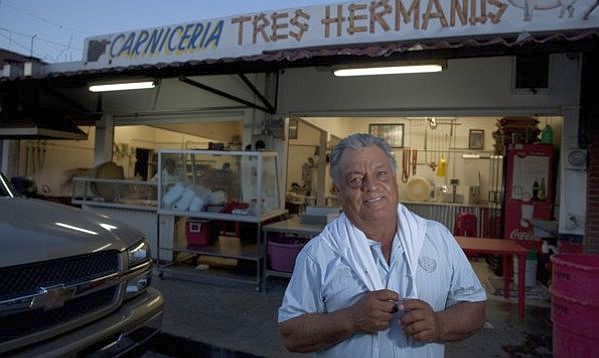Santa Maria del Refugio, Mexico — For a generation, the men of this town have headed north to the land of the mighty dollar, breaking U.S. immigration laws to dig swimming pools in Memphis and grind meat in Chicago.
In the United States, they were illegal aliens. Back home, they are new entrepreneurs using the billions of dollars earned "on the other side" to create a Mexican middle class as the U.S. economy slowed in the global recession. The migrants "did something bad to do something good," said Mexican economist Luis de la Calle.
Where remittances from El Norte were once mostly used to help hungry families back home simply survive, surveys now reveal that the longer a migrant stays up north, the more likely the cash transfers will be used to start new businesses or to pay for homes, farm equipment and school tuitions.
From Santa Maria del Refugio, a once rural, now almost suburban, community of 2,500 in central Mexico’s Guanajuato state, young men have gone to the United States seeking the social mobility they could not find at home.
Their money, and many of the workers themselves, have since returned, as the U.S. economy slowed in the global recession. For the first time in 40 years, net migration is effectively zero. About the same number of Mexicans left the United States last year as arrived. Migration experts expect the northward flow to pick up again as the U.S. economy improves. It is also possible that as Mexico provides more opportunity for upward mobility, some potential migrants will stay home.
In Santa Maria, dollars scrimped and saved in the United States have transformed a poor pueblo into a town of curbed sidewalks, Internet cafes and rows of two-story homes rising on a hillside where scrawny cattle once grazed.
"Look at this place — it’s practically a city now," said Roberto Mandujano, 50, who moved back to his home town and opened a hardware store five years ago. "There was nothing here when I left."
Mandujano is a member of a new demographic in Mexico, the anxious, tenacious, growing middle class who own homes and cars and take vacations. They see the United States more as a model than an exploiter.
Born into a family of 10 siblings, Mandujano set out from Santa Maria and crossed the Rio Grande at age 17. He found work on landscaping crews and highway projects, and eventually earned a plumber’s license. Now back home in Mexico, he runs half-marathons on the weekends and owns a well-stocked store ("my little Home Depot") and a U.S. green card, traveling back to Texas whenever he wants.
"On an airplane," he said with pride.
Development experts and economists here have struggled to measure the extent to which remittances, the money sent home by migrants, have fueled middle-class growth. The Mexican government is good at counting the dollars flowing into the country. Less understood is what recipients are doing with the money.
Invested remittances
Some 12 million Mexicans — which represents 15 percent of Mexico’s labor force — reside legally and illegally in the United States, according to the Pew Hispanic Center. Researchers say the longer that migrants work in the United States, the more their money drives upward mobility.
Read more on WashingtonPost.com


